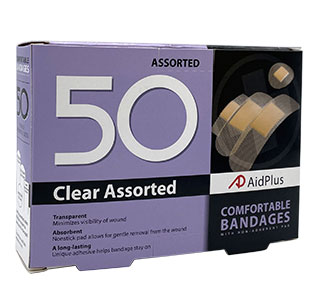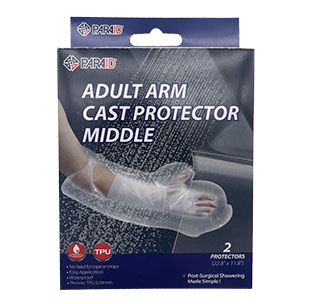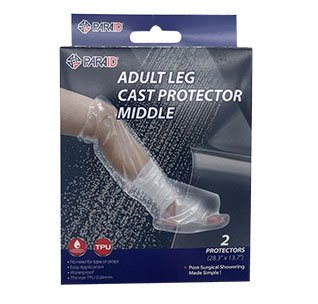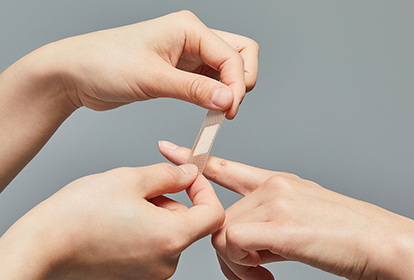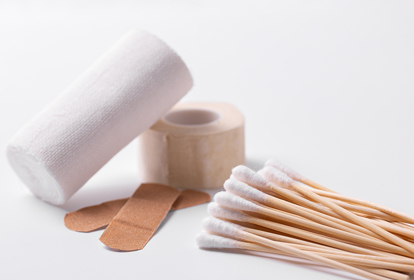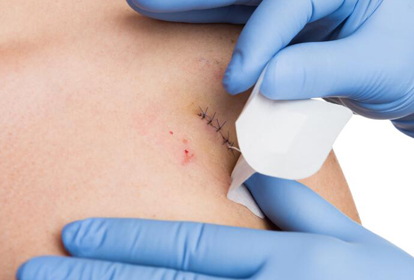Hydrocolloid dressings, a revolutionary advancement in wound care, harness the power of moist healing environments to promote quicker and less painful wound recovery. Originating from the need for more effective and patient-friendly wound management solutions, these dressings are composed of gel-forming agents like gelatin, pectin, and carboxymethylcellulose, embedded in a strong, flexible, and waterproof polyurethane backing. This unique combination not only seals the wound from external contaminants but also maintains an optimal moisture level, crucial for the body's natural healing processes.
What Makes Hydrocolloid Dressings Unique?
Hydrocolloid dressings stand out in the world of wound care for their distinct composition and mechanism that promote healing. Unlike traditional bandages, these dressings contain gel-forming agents such as gelatin, pectin, and carboxymethylcellulose, which interact with the wound's exudate to form a gel-like substance. This process not only keeps the wound moist but also aids in the body's natural healing processes.
Advantages Over Other Dressings:
Moist Healing Environment: Unlike dry dressings, hydrocolloid dressings create a conducive healing environment that accelerates tissue repair.
Self-Adhesive and Flexible: These dressings easily conform to body contours, providing comfort and protection even on joints.
Reduced Pain and Trauma: Minimizes pain upon removal, as they do not stick to the wound bed.
The unique capabilities of hydrocolloid dressings to seal wounds, prevent infections, and promote faster healing make them a preferred choice for managing a variety of wounds, from minor cuts and abrasions to chronic ulcers and pressure sores. Their ability to maintain a moist healing environment is particularly beneficial for wound healing, distinguishing them significantly from other types of dressings.
Benefits of Using Hydrocolloid Dressings
The utilization of hydrocolloid dressings in wound care brings a multitude of benefits, making them an invaluable asset in the treatment of various types of wounds. These dressings are known for their unique properties that not only accelerate the healing process but also ensure a more comfortable recovery period for patients.
Key Benefits:
Moist Wound Healing: Hydrocolloid dressings create a moist environment that is ideal for wound healing, facilitating faster cell growth and regeneration.
Protection Against Infection: Their occlusive nature makes them impermeable to bacteria, significantly reducing the risk of wound infection.
Pain Management: They do not adhere to the wound bed, minimizing pain during dressing changes.
Versatility: Suitable for a wide range of wounds, including pressure ulcers, minor burns, and venous leg ulcers.
Convenience: Designed for extended wear, they require fewer changes than many other types of dressings, reducing the overall burden of wound care.
These dressings are particularly beneficial for patients with sensitive skin or those who require a dressing that can stay in place for several days without frequent changes. By maintaining a moist healing environment, hydrocolloid dressings not only expedite the healing process but also minimize the potential for scarring, making them a preferred choice for both healthcare professionals and patients alike.
How to Apply and Remove Hydrocolloid Dressings
Applying and removing hydrocolloid dressings correctly is crucial for maximizing their benefits while minimizing discomfort or damage to the healing wound. Here's a step-by-step guide to ensure effective usage.
Applying Hydrocolloid Dressings:
Clean the Wound: Gently clean the wound and surrounding skin with a mild cleanser, patting dry to ensure optimal adhesion.
Choose the Right Size: Select a dressing that extends at least one inch beyond the edges of the wound to secure it properly.
Prepare the Dressing: If necessary, cut the dressing to fit the wound shape, handling the edges to avoid contamination.
Apply Gently: Peel off the backing and apply the sticky side to the wound, smoothing out any bubbles or wrinkles for a snug fit.
Removing Hydrocolloid Dressings:
Loosen Edges: Gently press down on the skin near the edge of the dressing and carefully lift an edge.
Peel Back Slowly: Slowly peel the dressing back from the skin in the direction of hair growth to reduce discomfort.
Cleanse the Area: Once removed, cleanse the area again to prepare for a new dressing if needed.
Choosing the Right Hydrocolloid Dressing
Selecting the appropriate hydrocolloid dressing is pivotal for effective wound management. The choice depends on various factors including the wound's size, location, and the amount of exudate it produces. This section outlines key considerations to help in making an informed selection.
Factors to Consider:
Wound Size and Depth: Opt for a dressing that extends beyond the wound edges by at least one inch to ensure adequate coverage and adhesion.
Exudate Level: High exudate wounds may require a more absorbent hydrocolloid or frequent dressing changes, while dry wounds benefit from the moisture-retentive properties of standard hydrocolloids.
Location of the Wound: For joints or areas subject to movement, look for highly flexible dressings that can conform to body contours without compromising their protective barrier.
Types of Hydrocolloid Dressings:
Thin Hydrocolloids: Best for superficial wounds with minimal exudate. Ideal for areas requiring flexibility.
Thick Hydrocolloids: Suitable for moderately exuding wounds, offering more absorption and protection.
Special Shapes: Designed for specific body parts, such as sacral or heel dressings, ensuring better fit and coverage.
Patient Care and Monitoring with Hydrocolloid Dressings
Effective patient care and monitoring are crucial when using hydrocolloid dressings to treat wounds. This approach ensures the dressing is promoting healing as intended and helps identify any potential issues early. Here are key aspects to focus on:
Regular Wound Assessment:
Inspect the Wound regularly for signs of healing or any adverse reactions. Note changes in size, depth, and the amount of exudate.
Monitor for Infection: Be vigilant for signs of infection, such as increased redness, warmth, swelling, or unusual discharge.
Patient Comfort and Compliance:
Ensure the dressing is applied correctly to minimize discomfort and allow for natural body movements.
Educate patients on the importance of keeping the dressing intact and dry for its effective period.
Adapting Care Plans:
Be prepared to adjust the care plan based on wound progress. This might include changing the type of hydrocolloid dressing or its application frequency.
Communication with Healthcare Professionals: Encourage ongoing dialogue with healthcare providers for personalized advice and adjustments to treatment plans.
FAQs about Hydrocolloid Dressings
Hydrocolloid dressings, with their unique properties and benefits in wound care, often lead to questions regarding their use, effectiveness, and suitability for various wound types. Here are some frequently asked questions that cover essential information for those considering or currently using hydrocolloid dressings.
Can hydrocolloid dressings be used on infected wounds?
Generally, No: Hydrocolloid dressings are best used on clean, uninfected wounds. If an infection is present, alternative treatments should be considered, and medical advice sought.
How often should the dressing be changed?
Can you shower with a hydrocolloid dressing?
Yes, with Caution: Most hydrocolloid dressings are waterproof, allowing for showering without removing the dressing. However, avoid direct high-pressure water on the dressing to prevent loosening.
Do hydrocolloid dressings speed up healing?
Are there any side effects?
 English
English
